For long as I can remember, I have always wished to have a small garden patch where I could grow my own food and botanical colors for my creative practice. Even though I have previously grown food on a balcony, this is the first time I am growing natural dye plants for making lake pigments. I’ll share my methods, challenges and learnings in growing natural dye plants in the blog series “What’s happening in my Dye Garden”!
Cultivating plants and incorporating them into your creative process, in addition to the environmental benefits, is a way to make a connection with the natural world, similar to growing our own food. Until now, the only gardening area I had was on our apartment’s windowsills and balcony, and growing plants in containers were the only option. This year, though, I have access to a small garden plot at a nearby organic nursery that belongs to Angelika Ertl, one of Austria’s renowned organic garden experts.
What to plant in a dye garden?
The baffling question. I researched extensively which plants to start since I knew I had limited space, and it was the first time growing plants for extracting natural pigments. I wanted to get a range of colors and use plants that either had a high yield or exciting colors and were also edible. After much thought, I narrowed the list to plants suitable for growing in the Austrian climate and those I have seen growing on this land, except for Japanese indigo (Persicaria tinctorium). Because temperature, humidity, and solar exposure substantially impact plant dye content.
Following is the list of plants that I am currently growing from seeds (demeter organic). I decided mostly on annuals except for woad which is a biennial plant. Although the list is extensive, not all of the flowers are suited for growing in a balcony garden. As a result, I added a few more plants to my list that will be transplanted into the garden area once they are ready.
- Anthemis tinctoria (Dyer’s chamomile)
- Calendula officinalis (Calendula)
- Carthamus tinctorium (Safflower)
- Coreopsis tinctoria (Coreopsis)
- Cosmos sulphureus (Cosmos)
- Istais tinctoria (Woad)
- Malva sylvestris (Mallow)
- Persicaria tinctoria (Japanese Indigo)
- Tagetes tenuifolia (Signet marigold)
- Tagetes patula nana (French marigold)
- Zinnia elegant (zinnia)
Setting up seed trays and challenges
One of the most challenging aspects of growing seedlings from seeds was not having grow lights, heat pads, a glass house or any expensive setup to ensure that the seeds sprouted precisely. I had a very frugal and basic setup that consisted of seeds sown in either seed trays with a plastic lid (serving as a mini ‘glasshouse’) or soil-less coco tabs. For growing seedlings, I used an organic potting mix purchased from a local nursery. The marigold and coreopsis were the simplest to grow of all the seeds. They had the best seed viability rate.
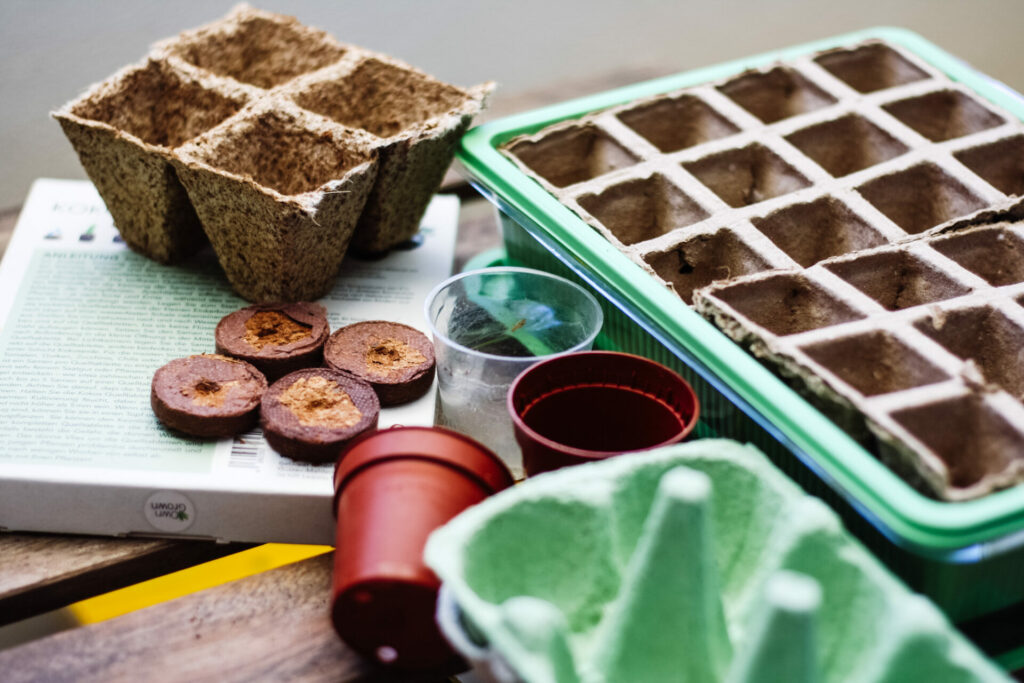
Basic supplies
After the seeds sprouted, I ran into another issue: my seedlings became lanky due to insufficient light. I was able to remedy the problem by replanting them in seed trays. Despite this, many of my seedlings perished. I had to resow zinnia, cosmos, and indigo seeds. It’s starting to look a lot better!
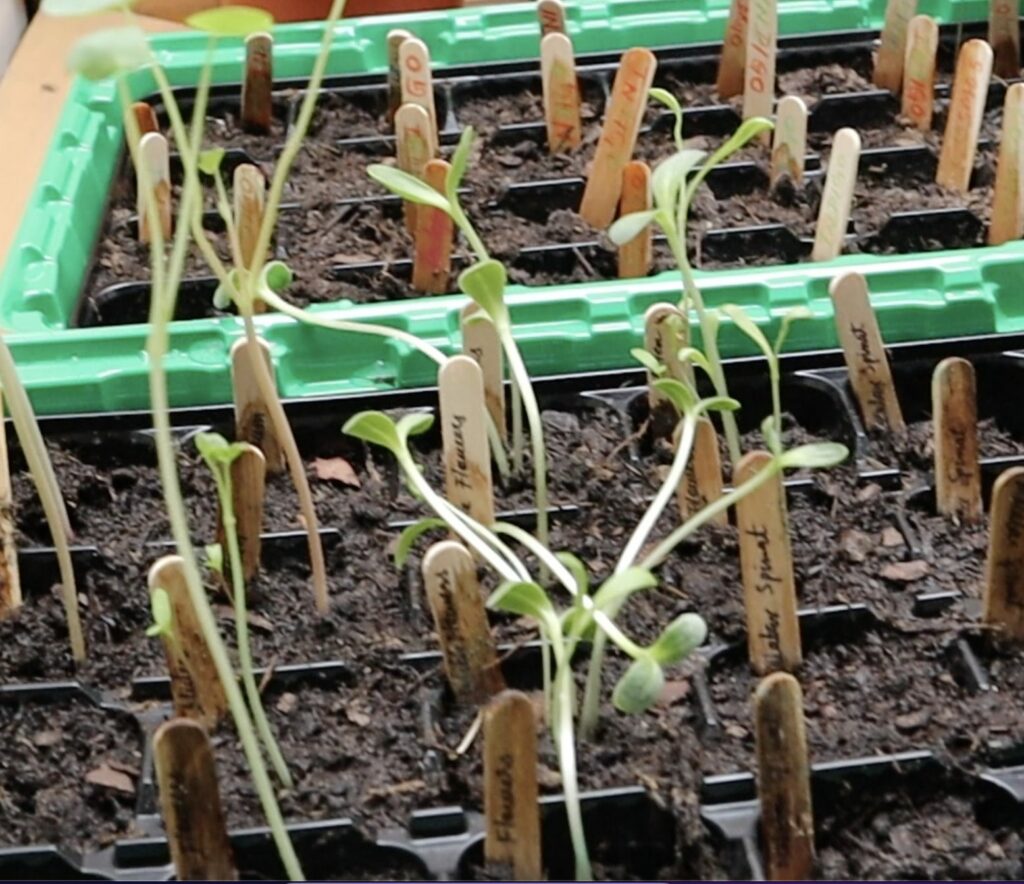
Zinnia seedlings
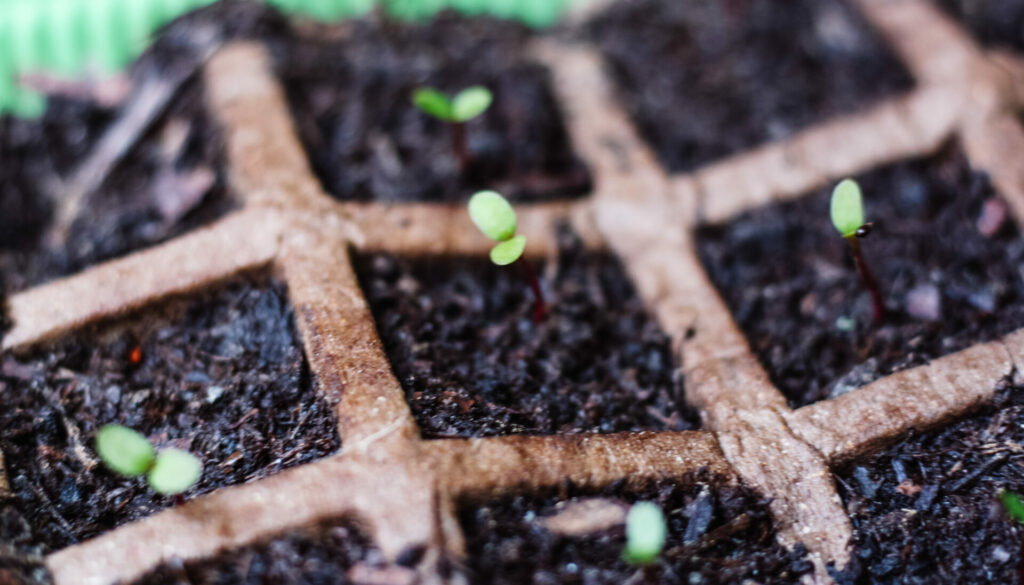
Persicaria tinctorium (Japanese Indigo)
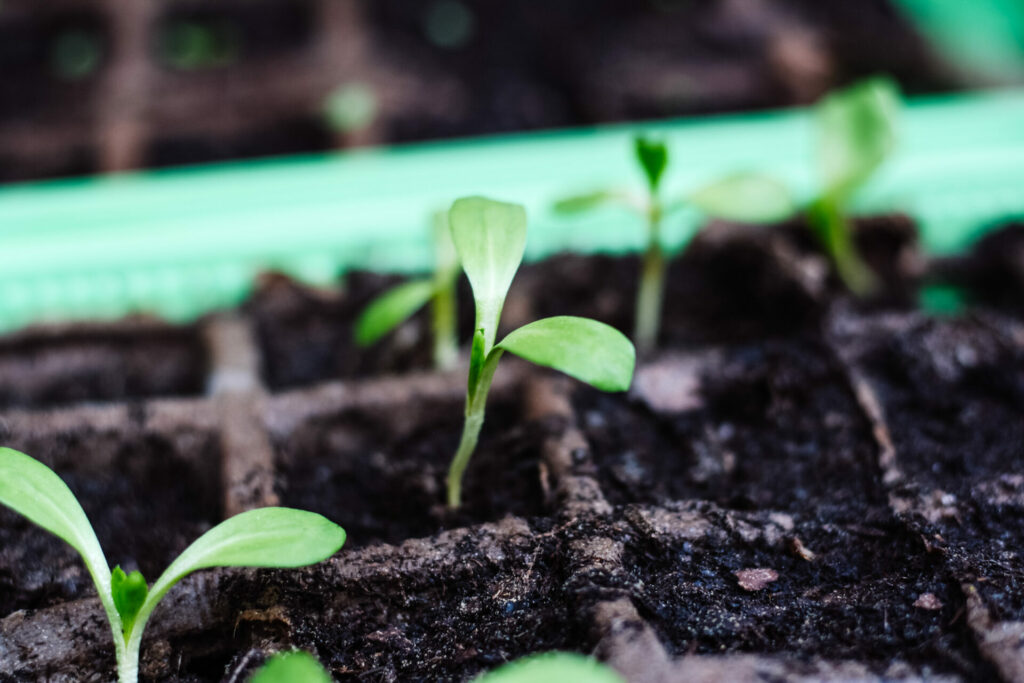
Carthamus tinctorium (Safflower)
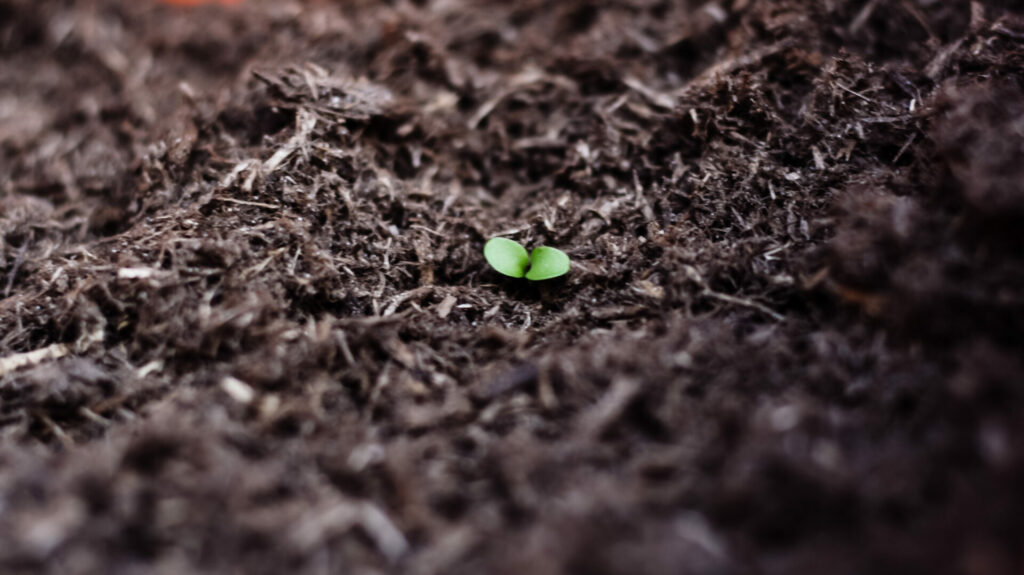
Istais tinctoria (Woad)
Balcony garden vs garden patch: Which is more challenging?
There are benefits and drawbacks to growing a garden in pots on a balcony or a plot of land. I’m yet to discover which will be more difficult. In the meanwhile, I have already prepped the no-dig organic garden patch for the young plants that will be transplanted in a couple of weeks. Even though the garden patch is small it is still quite a lot of work.
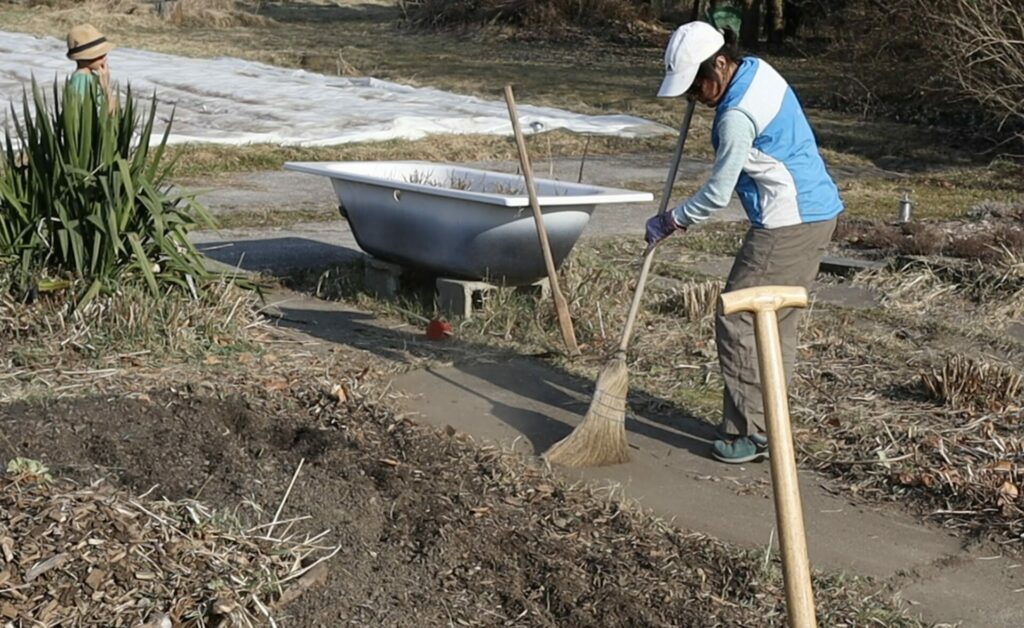
Preparing the garden patch
This can be interpreted as evil, or you can devote time to maintaining your small green space and use it as an opportunity to slow down, be conscious, and connect with a piece of nature in the midst of the city’s bustle!
Keep an eye out for the next part of the ” What’s happening in my Dye Garden?” blog series!
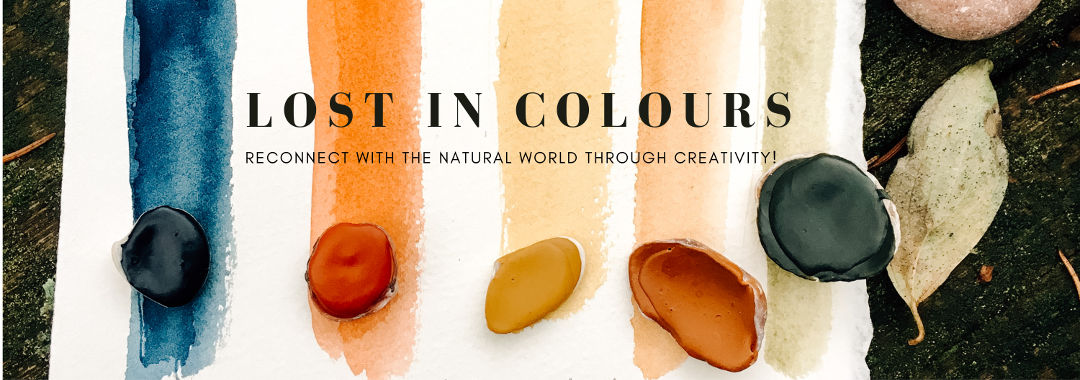
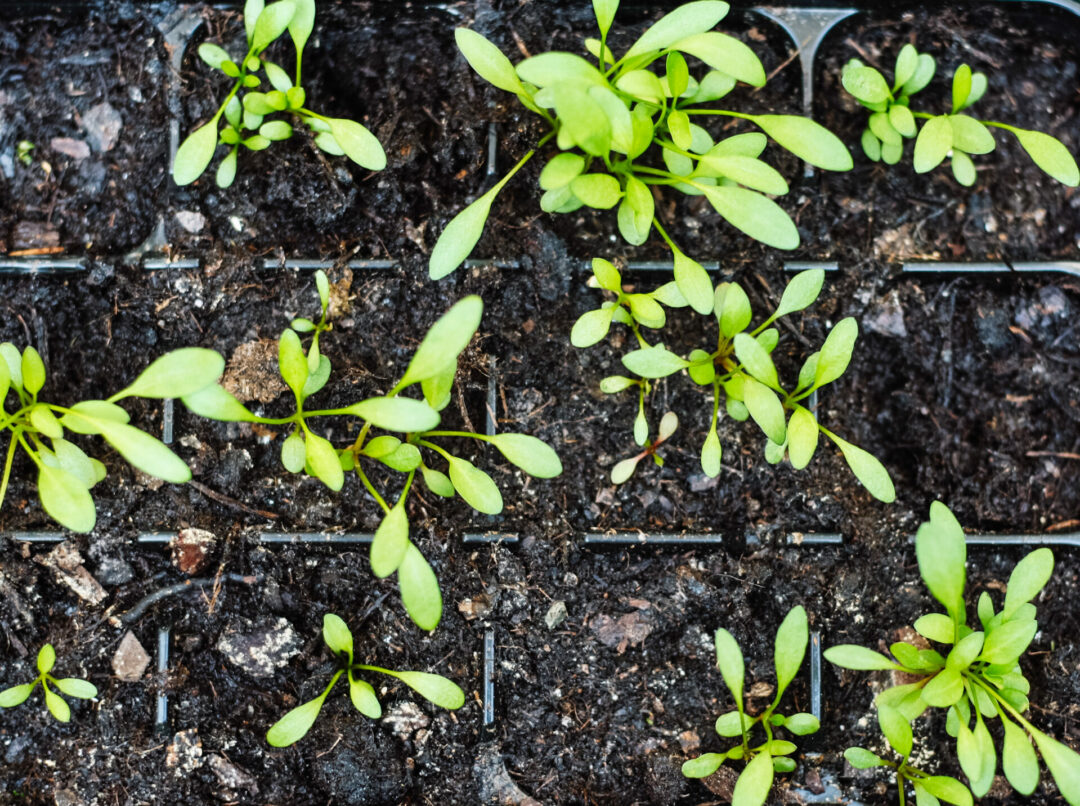
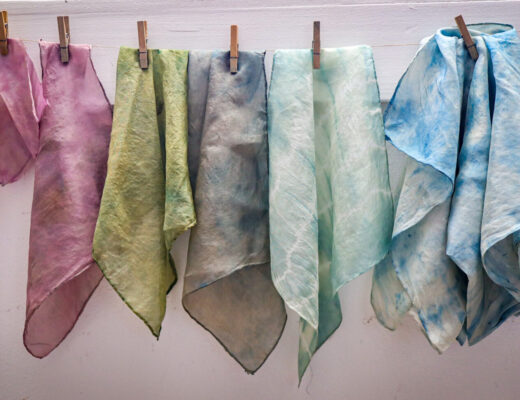
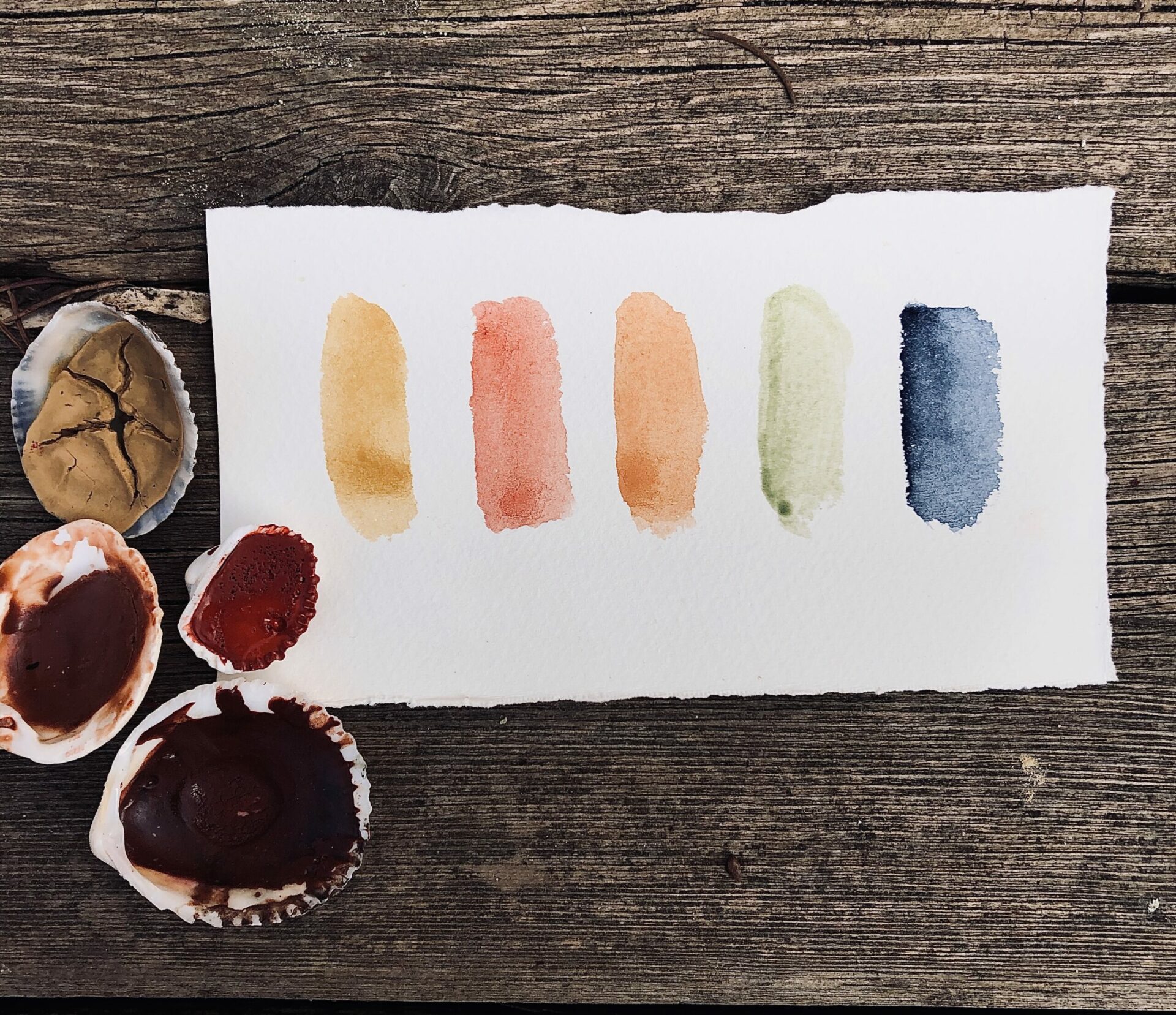
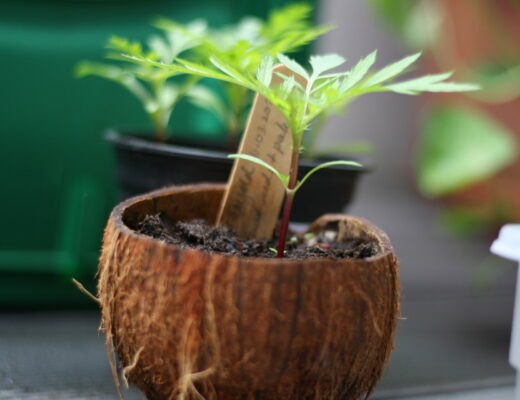
No Comments